I mentioned in the slug post that there are ducklings on the farm at the moment, and of course I wouldn’t deny you a post about them. You can think about it as a bit of adorableness to balance the total-lack-of-adorableness of the slug post.
Even though Hawaii is subtropical and doesn’t have a huge amount of temperature differentiation between seasons, spring is still duckling time on the farm. My parents have both khaki campbells, which are bred for egg laying, and muscovy ducks, which are ‘nanny’ ducks.
Ducks can no longer be imported into Hawaii, because of worries that they will breed with the native Laysan ducks, driving them to extinction. My parents had a healthy flock of khaki campbells from before the ban, which makes any ducklings from their flock very valuable, both for sale within the state (which is allowed), and for continuing their own flock. Unfortunately khaki campbells are very poor mothers, and our attempts to let them hatch their own clutches were extremely disappointing. You can hatch khaki campbell eggs using an electric incubator, but that is a LOT of work. The eggs need to be turned five times a day while incubating, and then you have to feed and care for the ducklings as if you were their mother once they hatch.
The solution to the hatching problem is muscovy ducks. Muscovy ducks are a slightly different species to the other duck breeds. They are to normal duck breeds as donkeys are to horses: they can breed, but their offsprings are mules (which is actually a generic term for sterile hybrids, though it is most often used for donkey-horse crosses), and are almost invariably sterile. Muscovies aren’t very good egg layers, but they are valued by farmers because they are extremely devoted mothers, with much better hatching rates than khakies.
Once a muscovy starts acting broody in the spring my parents begin collecting fertile khaki eggs and incubating them. After a couple of weeks, once the muscovy has built a nest and laid a clutch, they switch out her eggs for the khaki campbell eggs, and she hatches and cares for them as if they were her own. They can even incubate extra eggs and hatch them at the same time, and then add those ducklings to the muscovies hatchlings, and she will care for them all.
This spring my parents let a muscovy hatch her own nest of muscovy ducklings, to make sure we always have nanny ducks. A week later another muscovy hatched a clutch of khaki campbells, to which my parents added some ducklings they hatched in the incubator, so there were two flocks of ducklings waiting for me when I arrived on the farm.
The muscovy ducklings look very much alike: 16 nearly identical brown and yellow balls of fluff following their mum around. When they see my parents they peep like mad, because muscovy mum may be mum, but my parents are the source of All Good Things (good things being chopped bananas, papayas, mangoes, ohia ‘ai, and grain). Because they are so alike, they were dubbed the Madelines.
The 18 khaki ducklings, littler, and in a mix of light and dark browns, yellow, and brown with yellow, get called the Khaki Keikis (try saying that three times fast!). Keiki is the Hawaiian word for child.
Both the Madelines and the Khaki Keikis are growing like mad: they are both twice the size they were when I first arrived,. Two of the Madelines are even beginning to get their adult plumage: glossy green-black wing feathers, and black and white speckled breasts.
To finish off, here is a video (uploaded with much effort, as the internet is so slow it took almost half and hour, and for the first 5 tries the internet crashed in the last 5 minutes of loading — argh!) of the Khaki Keikis eating worms as my dad turns earth:

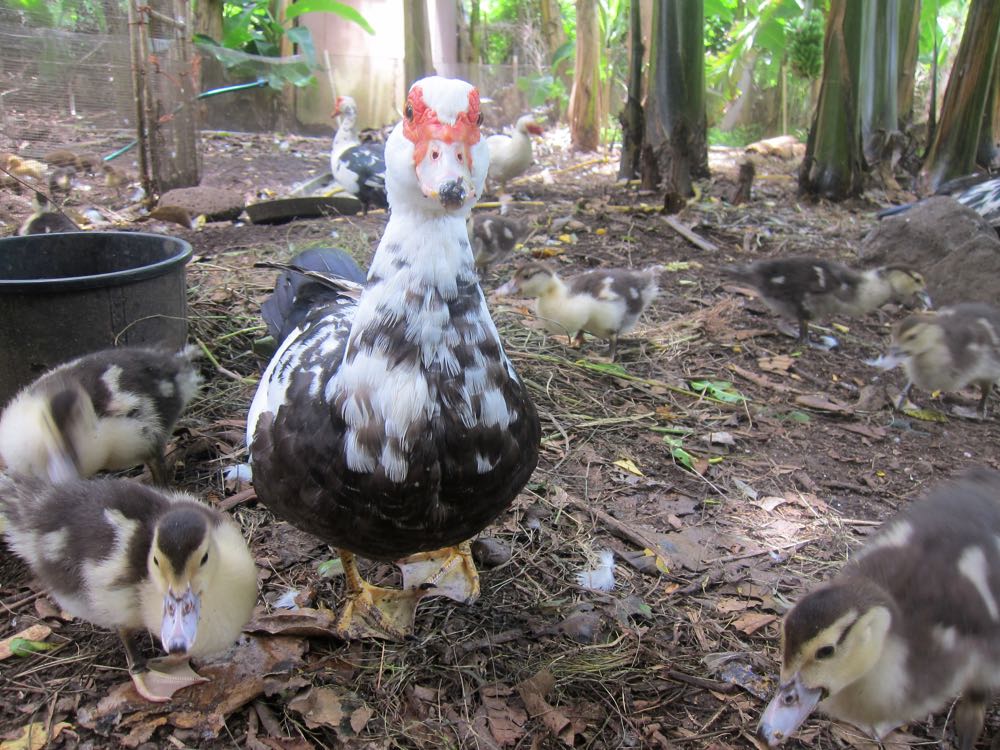
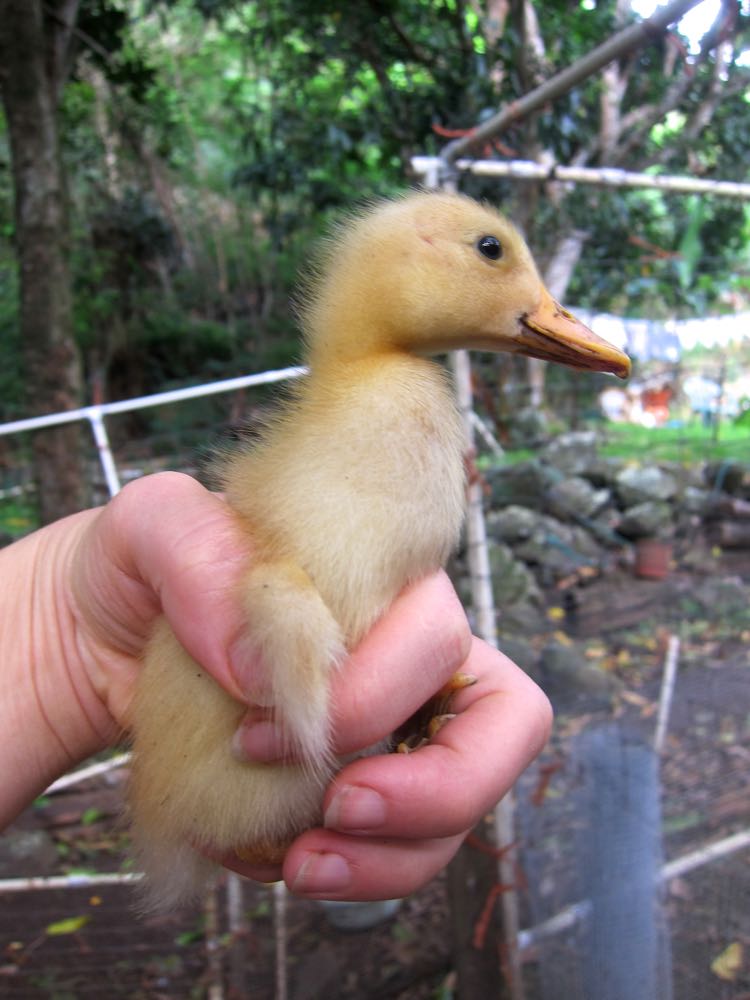

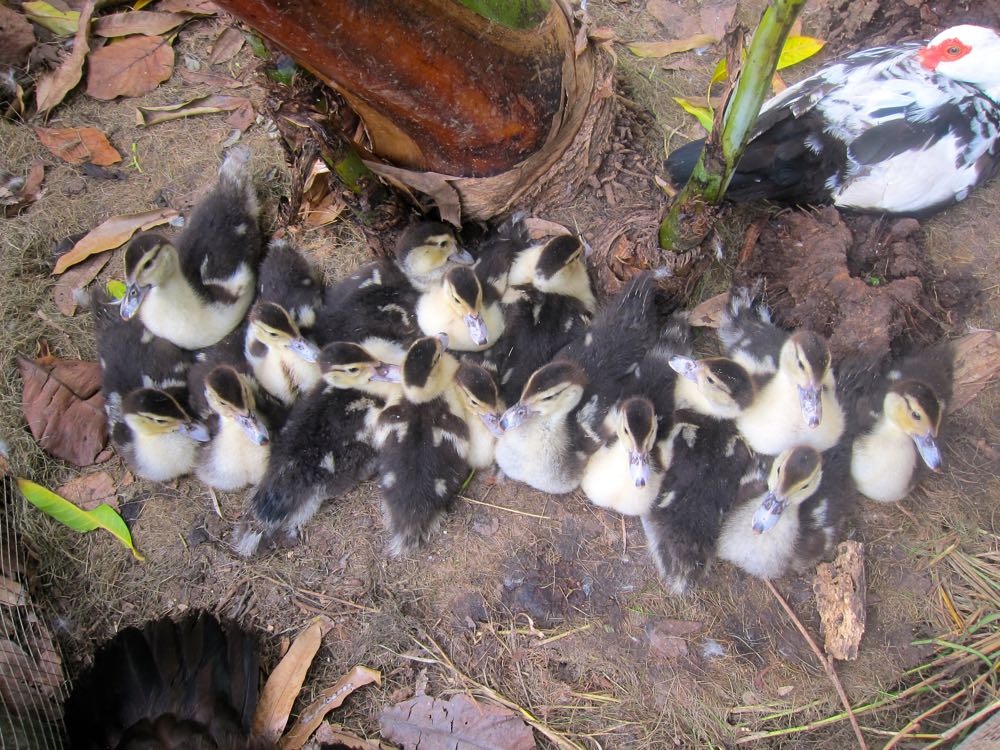
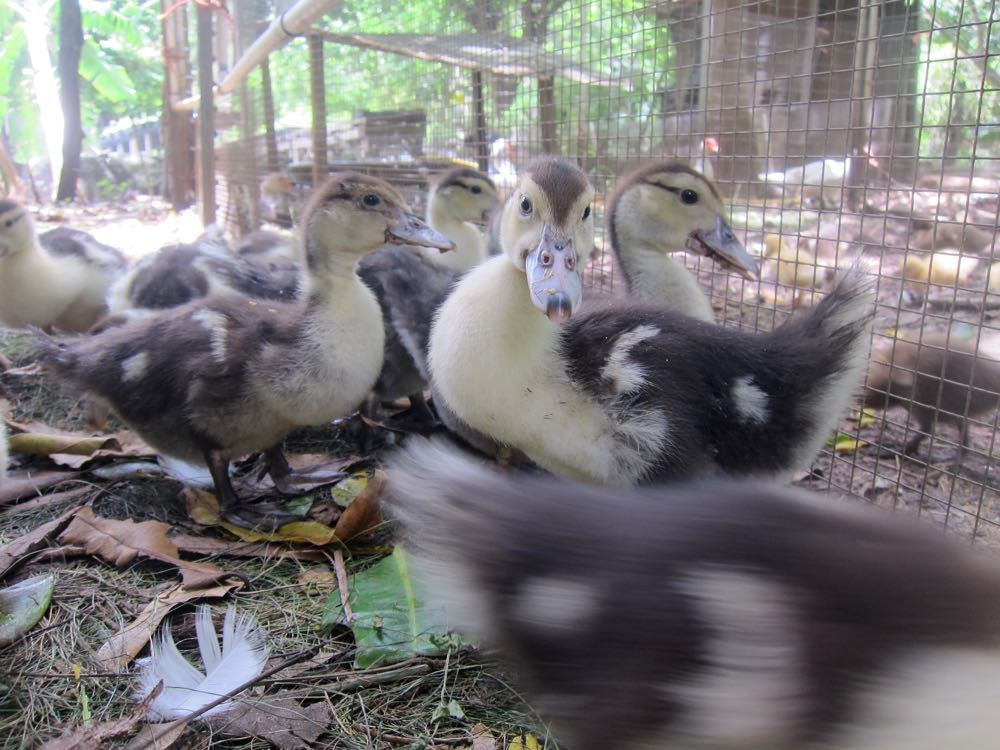
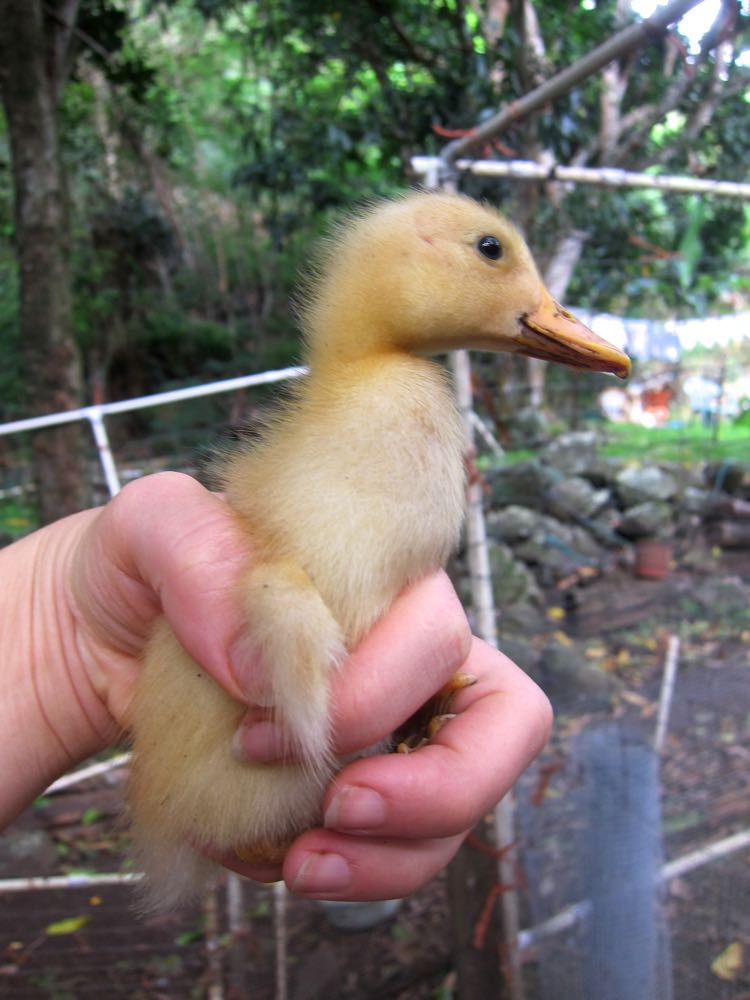
.Awwww. How gorgeous are they!?
Those guys are so cute! Love the worm excitement!
Squee! I love ducks and ducklings! Thanks for the post.
I want to tell you how much I enjoy your blog. I have you under “Costumes” in my favourites but there is so much more! Not just your adventures sewing period garments and rate-the dress, but houses built to a smaller scale (sorry, I’ve forgotten what the scale was), penguin crossing signs and now slugs and ducklings. I check your blog every single day just so I don’t miss anything. thank you very much.
sewcharacteristicallyyou.comThey are so cute. They certainly make up something for the slugs.
Sarah
http://www.sewcharacteristicallyyou.com/blog
Thank you for the delightful duckies!
I had a laugh out loud moment at the ducklings being Madelines! Those fab yellow and black illustrations of good little french girls following the nun.
I do love how your mind works 🙂
As a confirmed cute-connoisseur for the last 10+ years, it is my humble opinion that of all the adorable baby animals on this planet, ducks are in the top 5. I never thought I would be so happy to see duckies go after worms so enthusiastically! And ohhh, the peeping!
The khaki duck children are very cute.
Awww! Too cute 😀
A wealth of adorable ducklings!